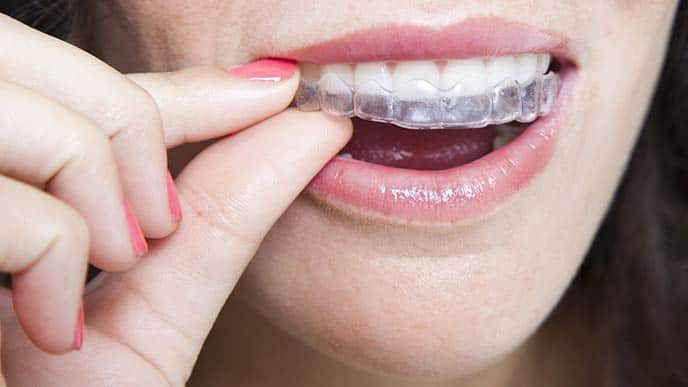- Oral Health and Dental Care | Colgate®
- Oral Health
- Lingual Braces


If you or you child needs braces, you're not alone: More than three million American teenagers have braces, and Harvard Medical School reports one in five orthodontic patients are adults. Braces technology has come a long way, and there are now many types you can choose from. Lingual braces, one of the more recent forms of orthodontic work, is proving popular for people conscious about the look of braces.
What are Lingual Braces?
You already know about the traditional metal braces placed on the front of the teeth. What sets lingual braces apart is in their placement on the back of the teeth. Lingual braces are virtually invisible, and that's the main reason eligible patients choose them. This partly explains why they are more common among adults than children. One other advantage is if you play a wind instrument or a sport, lingual braces are easier to adapt to than traditional braces. Keep in mind that you'll have to search for an orthodontist who offers lingual braces. Not all practices offer them because dentists need to take continuing education courses in order to learn to use the equipment required to place the braces. According to the American Lingual Orthodontic Association (ALOA) , these custom-made braces usually cost more than traditional outfits.
Are Lingual Braces Right for You?
According to 1-800-Dentist , not everyone can wear lingual braces and there are some challenges associated with wearing them that aren't found in traditional braces. First of all, the teeth have to be long enough to provide sufficient room to glue the braces on the inside of the teeth; therefore, lingual braces may not work for children or someone with especially small teeth. You also cannot wear lingual braces if you have excessive bite problems.
Lingual braces can be more difficult to get used to than traditional braces because the positioning of linguals affects your tongue. At first, you may find that swallowing without using a tongue thrust (placing the tongue between your teeth when swallowing) is difficult, and talking is a little tricky – not to mention that tongue thrusting places force on your teeth that can lead to more dental issues. You may need to consciously practice not using a tongue thrust when swallowing by gently touching your teeth together and then swallowing. For talking, consider over-enunciating certain words for several weeks after getting your braces.
According to the ALOA, sometimes the overall treatment time using linguals is longer than with traditional braces, but it is relative both to the orthodontist and to your cooperation in caring for your teeth and braces while wearing them. You have to be even more diligent about cleaning your teeth, because the placement of lingual braces makes it harder to check whether you have brushed away all the food particles when brushing.
Cleaning Your Teeth with Lingual Braces
Keeping your teeth clean is important, no matter what type of braces you choose. Food easily gets stuck in the brackets and wires and can cause plaque to form and tooth decay. Brush after every meal, making sure that you brush each tooth at the gum line and both above and below the brackets of your braces. Because lingual braces are on the back of your teeth, you should pay special attention to brushing back there.
So what are lingual braces for? The advantage is mostly aesthetic. If you understand the challenges and are willing to make the effort required for wearing lingual braces, discuss the option with your orthodontist to determine whether it's right for you.
Related Products

Helping dental professionals
More professionals across the world trust Colgate. Find resources, products, and information to give your patients a healthier future









